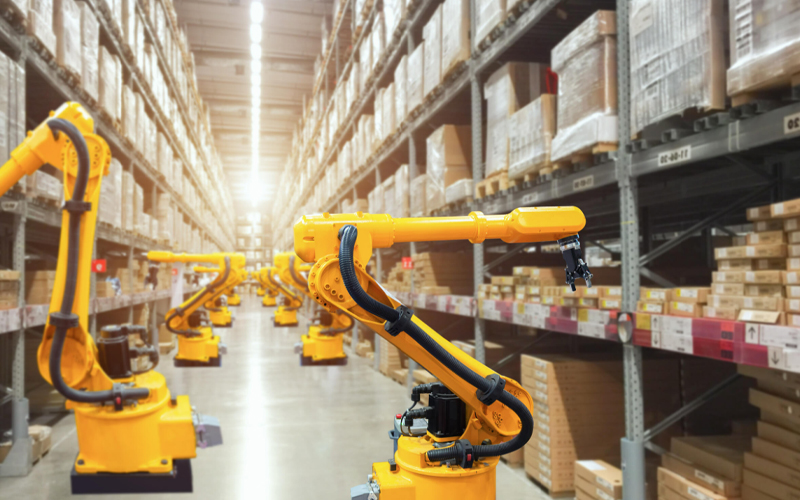The utilities industry has been facing numerous challenges over the years, from the need for sustainable energy solutions to improving efficiency and reliability. In recent years, the industry has seen a beacon of hope in generative artificial intelligence (GAI), a technology that has the potential to transform the way these services are delivered and managed. GAI is already making a mark in the utility market and is expected to be valued at USD 8,676 million by 2032, a massive jump from being valued at USD 534 million in 2022.
What is Generative AI?
Generative AI, or GAI, is a transformative subset of AI that focuses on generating new content, such as text, images, music, or other data types. It is powered by deep learning models, like the Generative Pre-trained Transformer (GPT) series, which are trained on vast datasets to understand patterns and context and to subsequently generate relevant new content. In many cases, such data cannot be distinguished from content created by humans. GAI has already shown promise in a wide array of applications, from natural language processing to image synthesis and even drug discovery.
The implementation of GAI in the utilities industry shows great potential.
- Enhance grid management and optimisation
- Accelerate renewable energy research
- Enable efficient simulated studies
- Enhance asset maintenance
- Optimise operations and reduce costs
- Offer personalised customer experiences
- Development of new business models
One of the most pressing challenges in the energy industry is grid management and optimisation. With the increasing adoption of renewable energy sources like solar and wind power, grids have become more complex, requiring real-time adjustments to balance supply and demand. Generative AI can play a significant role in enhancing grid management by predicting energy generation and consumption patterns with remarkable accuracy.
Generative AI models can analyse historical data, weather patterns, and real-time data from sensors, smart meters, grid infrastructure and customer interaction and generate forecasts that help utility companies make informed decisions about energy production, storage, and distribution. These forecasts enable grid operators to optimise energy flow, reduce downtime, and minimise waste, ultimately leading to cost savings and a more reliable energy supply.
The transition to sustainable energy sources is a top priority in the utilities industry. Generative AI can accelerate renewable energy research and development by simulating and optimising various aspects of energy production.
For instance, researchers can use GAI to model wind and solar farm efficiency under different weather conditions, helping in the design of more productive and cost-effective renewable energy installations. In fact, new designs can be optimised for local conditions. Details such as the placement of wind turbines and solar panels can be worked out too. GAI can also help in the discovery of new materials for solar panels or energy storage systems, potentially revolutionising the industry's capabilities.
New data generated by AI can be utilised to improve operations in the utility industry and also ensure that operational decisions are data-driven. For example, synthetic data can be generated and used to test new models and algorithms without any fear of damaging ongoing operations.
Similarly, new scenarios can be generated and the effects of different decisions on utility networks can be studied. Such simulations can help identify potential issues so that their solutions can be planned and tested on the simulated systems.
Utility companies manage extensive infrastructures that require regular maintenance to ensure safety and reliability. Generative AI can assist in predictive maintenance by analysing sensor data, historical maintenance records, and environmental factors to predict when equipment is likely to fail or require servicing.
By identifying maintenance needs proactively, utility companies can reduce downtime, minimise costly emergency repairs, and extend the lifespan of their assets. This leads to cost savings and improved service reliability.
GAI can be used to reduce waste, improve efficiency and optimise energy consumption in the utilities industry. For example, new routing and scheduling strategies that boost efficiency and minimise costs can be generated using GAI. The right strategy will also maximise customer satisfaction.
Generative AI can also transform customer interactions. Chatbots and virtual assistants powered by GAI can provide personalised, efficient, and round-the-clock customer support. These AI-driven agents can answer queries, troubleshoot issues, and even assist customers in optimising their energy consumption.
For example, if a customer is concerned about high electricity bills, a generative AI chatbot can analyse their historical energy usage, provide tailored tips for energy efficiency, and recommend suitable rate plans. This level of personalisation not only enhances customer satisfaction but also helps utility companies build strong customer relationships.
By analysing customer data in terms of behaviour and demands, GAI can even zone in on new services to be offered to customers. New opportunities for increasing earnings can be modelled and tested too.
Challenges and considerations
While the potential benefits of GAI in the utilities industry are substantial, the challenges cannot be ignored. These include data privacy concerns, ethical considerations, and the need for skilled personnel to implement and manage AI systems. The personnel must be proficient in both AI and utilities to develop and deploy the models successfully.
Additionally, ensuring the security of AI-powered infrastructure is paramount, as vulnerabilities could lead to disastrous consequences. Regulatory and ethical guidelines must be adhered to as well.
The large amounts of data required to train generative models are quite a serious challenge too. If a utility company does not have access to the required data, or the quality of data is not good enough, the efforts to train generative models will fail.
Generative AI is here to stay
It can be safely concluded that generative AI is poised to revolutionise the utilities industry. As the world grapples with the pressing challenges of sustainability and energy efficiency, generative AI can play a significant role in the pursuit of a more sustainable and reliable utility sector. The time to embrace generative AI in the utilities industry is in the here and now, as it holds the key to unlocking innovation and progress in this critical sector.
* For organizations on the digital transformation journey, agility is key in responding to a rapidly changing technology and business landscape. Now more than ever, it is crucial to deliver and exceed on organizational expectations with a robust digital mindset backed by innovation. Enabling businesses to sense, learn, respond, and evolve like a living organism, will be imperative for business excellence going forward. A comprehensive, yet modular suite of services is doing exactly that. Equipping organizations with intuitive decision-making automatically at scale, actionable insights based on real-time solutions, anytime/anywhere experience, and in-depth data visibility across functions leading to hyper-productivity, Live Enterprise is building connected organizations that are innovating collaboratively for the future.







